What do you do when you made, in the eyes of many, the best game in the genre?
“You surround yourself with your betters”, said now Executive Producer Tomonobu Itagaki.
Products that combine art, music, interactivity and video on the scale of a game like Ninja Gaiden require a team working in a cohesive direction. One person, often the lead designer, operates as a funnel to keep the crew on the same path. All while making sure each individual member feels like they are adding a part of themselves to the product. It isn’t the work of one man to make it, nor to take the credit. It is to make sure the team knows how to make it and what they will make.
Thus, together with 97 other great minds like ninjutsu expert Stephen K. Hayes, consultant Andrew Szymanski, producer Yoshifuru Okamoto and directors Katsunori Ehara and Hiroaki Matsui, Itagaki set out to improve on what was done before. A new direction, not only for Team Ninja but also Ryu Hayabusa himself, with their next title: Ninja Gaiden II.
(一)
CHAPTER ONE
back to basics
First the team went back to their Ninja Gaiden game from 2004 and broke it down. They asked themselves hard questions: what defined the game? What could be left out? “The First Ninja Gaiden was not a masterpiece” Itagaki stated looking back, ”lots of noise, lots of compromises, a lot of things that went in there that when looking back we didn’t like”.
First off, Ryu’s agility stayed at the center of the experience, still using the environment to his advantage by running and jumping off walls, delivering Ninja Gaiden’s trademark mobile style of combat.
The absolute basics of the combat engine also remained in tact. Dodging and blocking remained largely unchanged with even some advanced options such as the Continuous Jump and Guard Break Reset carrying over from Ninja Gaiden Black. The balance between light and heavy attacks complimented by a ranged attack option and finishing off with Ninpo magic returned as well. And as before the heavy attack button could still be held down to manually charge an Ultimate Technique, albeit sped up.
The Essence system remained similarly untouched, killed enemies still offer their souls as a yellow orb that can be used as currency or to fuel said Ultimate Technique. Kill a foe using an Ultimate Technique or when the combo-counter is high enough and they drop more money. End a foe’s life the normal way and they might drop blue healing orbs or red magical orbs.
It is strange that the Ultimate Technique didn’t receive a large overhaul after Ninja Gaiden Black. They’re still difficult to re-direct, can still be chained from each other using Essence to clear whole rooms and the Karma Scoring System still overly rewards them; making Karma Runs more of a puzzle on how to get as many Ultimate Techniques off within a single fight. However, as stated the goal wasn’t refinement.
For Ninja Gaiden II the team wanted to seek out new concepts and mechanics, heading forward into unknown territory. Digging deeper and deeper into their former product, the team felt that it was only fun to play if you were good at it. A strong player would use their agility in clever ways, block at the last second and had the best methods of punishing these foes. Meanwhile for newcomers, it was sink or swim. Director Matsui wanted players to immediately feel like a master ninja no matter their skill level, while still giving veterans that special feeling of mastery. This concept gave birth to the first new mechanic that would be at the center of Ninja Gaiden II and its development:
The Obliteration Technique (滅却集)
When attacking, each swing of the blade can lop off an enemy’s body part. Some attacks will cut off a leg, slowing them down and making them throw shurikens at you in an effort to distract you. A strong blow from your Tonfa-sticks might smash an arm to pieces, forcing the enemy to drop their bow, while the final slash from your Flails has a higher chance to decapitate, laying the opposing ninja to rest immediately.
Once a foe loses one or two body parts the player can use the aforementioned Obliteration Technique by pressing the Heavy attack button. A fully invincible, quick and detailed animation will play out in which Ryu finishes the opponent off. With each weapon having multiple animations depending on what limb is missing, everyone can, at least temporarily, feel like a master ninja. Just like Matsui intended.
As Ryu prepares to deliver these final blows, there’s a sign of mutual respect. If a delimbed ninja grabs Ryu they finish him off by sacrificing their own life, showing off just how dangerous you are in their eyes: their life means nothing if it means taking yours. On the flipside executing these foes has Ryu show respect back. They fought well, time to move on to the other realm and rest, 忍者の弟 (pronounced “nin DJA no toh toe”, meaning “ninja brother”).
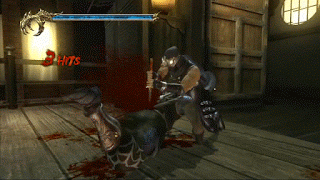
Beyond being its own separated mechanic, the Obliteration Technique’s inclusion ripples through the combat and how it plays out. Ninja Gaiden’s first outing on the Xbox emphasized defence. Ryu could counter after an attack had been blocked and enemies tended to drop their guard at a specific time for you to punish them.
In an interview on the sequel Itagaki stated that “the core gameplay seems to be undergoing a few changes. Whether or not Hayabusa is strong is up to the player. This time, the enemies will once again really come at Hayabusa with the intention of killing him. However, this time, while the last game was defense based, we’d like to make this one a bit more on the offensive side”. Thanks to the Obliteration Technique players never know when one of their attacks sends a limb flying, immediately changing the threat level of enemies and composition of the fight; you are never sure how a fight will play out. A once simply annoying Ninja Mage becomes a teleporting instant-death threat once he’s lost a leg for instance – the state of the enemies, Ryu and the fight are constantly in flux, but never beyond your controle. The fact that you need to attack to send limbs flying and need to go on the offensive to finish them off, all work together to see the game take its first step towards being a more offensively oriented title.
(二)
CHAPTER TWO
beauty in violence
As discussed in our previous article, good mechanics and playstyles are nothing without enemies that are crafted with these in mind. Even on the lowest difficulty setting enemies will try to lock the player down and it gets worse the closer players get to the almighty Master Ninja difficulty. When you go too heavily on the defensive they’ll punish your pacifism with a grab and when you leave yourself open after a badly timed Izuna Drop they’ll try to pin you down for the kill. There is no holding back, and if one attack strikes you there’s a good chance enemies will capitalize on this, seeing you getting combo’d for once. Yet, their survival instinct makes it so that their agression is lowered when you are engaging. By their design, idle players are punished while offensive playstyles are rewarded.
Though some critics asked why the previous game didn’t feature a lock-on feature, this feature is again absent here. Instead the game still works with a priority system, seeing Ryu automatically choose the nearest target to attack with some other little details determining what foe he strikes first when surrounded. While it takes some mastery to get down, it is the only viable option in a game where combat is this fast paced against so many foes.
The battles generally happen in large open areas, where Ryu is at his most vulnerable. While you can hold your ground, the game allows you to relocate to a previous area or one after it to gain a tactical advantage. Such as funneling foes towards you piecemeal or luring them near a wall that you can easily throw them against for a guaranteed crushed limb. A player has to realize that where the fight starts is where the enemy wanted to fight, so by all means they shouldn’t want to fight them there. Otherwise the game does a good job of mixing up the arenas, using different types of elevation and room shapes to make each encounter feel somewhat fresh.
All this brutality is experienced in an array of locations like a near-futuristic vista of Neo Tokyo sporting a combination of traditional Japanese architecture and foliage with a more modern sci-fi theme, a city on water reminiscent of Venice, to a depressing terrorized New York, and ending with a trip to what can only be described as hell itself. Most locales this time around are set in a familiar, albeit exaggerated, current day and age. Team Ninja wished to place Ryu, with his old traditions and methodologies, into a modern world filled with soulless metal buildings, guns and dishonor.
Director Matsui said that he believed the beauty in the locations was very important to Ninja Gaiden II, as there needed to be a balance. The beauty of the world has a juxtaposition with the violence that takes place within it, making the brutality stand out even more by seeing such beautiful vistas stained with blood and flesh.
In order to survive these brutal fights Ryu has more weapons than ever before at his disposal. Players can now access this arsenal with a press on the d-pad to pause the game and quickly swap between them, removing much of the slow menu management of before and keeping the game going at a steady pace. Unlike other games in the genre, Ninja Gaiden II does not feature weapons canceling into each other, instead wanting each weapon to be seen seperately, with its own strengths, weaknesses and playstyles.
Some, like the Kusarigama (鎖鎌), excel at using a multitude of grabs while dealing high damage with its regular attacks, but lacks a quick move. Others like the dual katana Dragon’s Claw and Tiger’s Fang (巌龍、伐虎) are more allrounders, but lack a good delimb-move. The Eclipse Scythe (闇月鐮刀) and Lunar Staff (無想新月棍) focus on groups of enemies in their own unique ways while the weapons like the Tonfa sticks (トンファー) and Vigoorian Flail focus on canceling their attack-strings within themselves into new moves, offering a more unique freeflow style of combat. Meanwhile, the Falcon’s Talons (硬殼猛禽爪) see Ryu become the weapon himself, its mobility allowing some strikes to cancel into wall runs. The Talons can also cancel most of its attacks into an invincible grab to get out of danger, but lacks a wide attack against groups of enemies to balance it out.
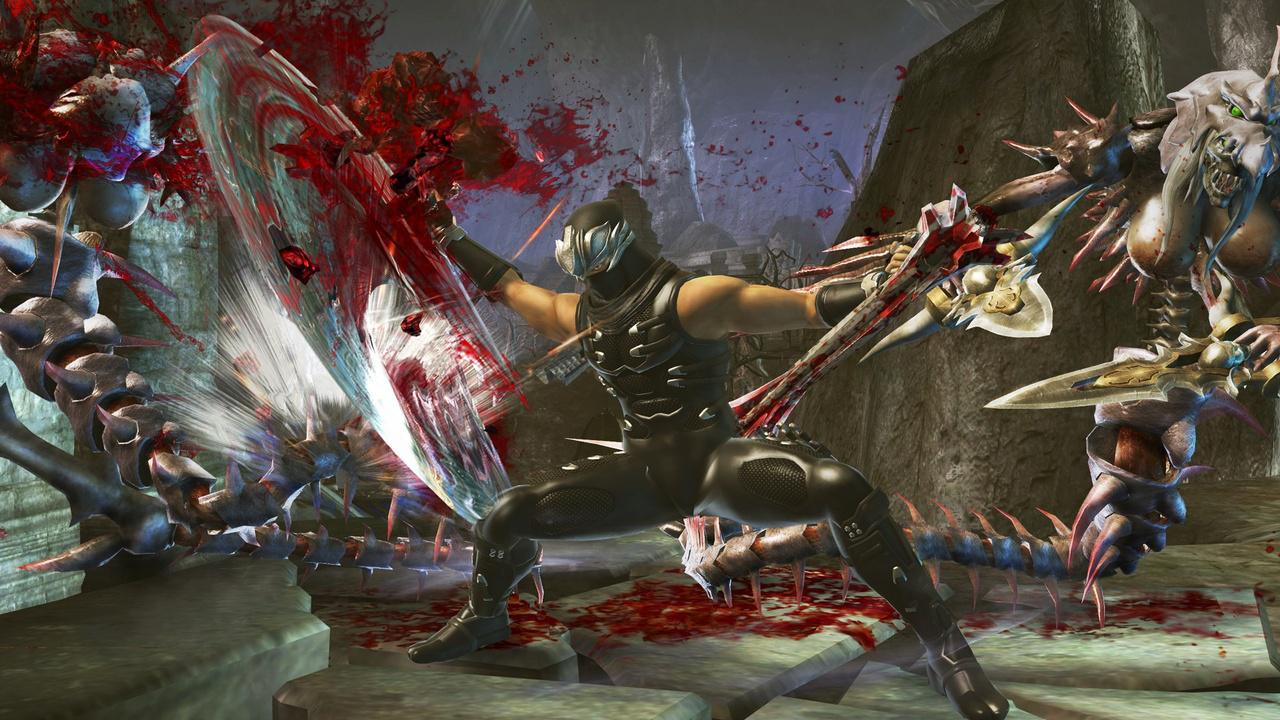
Lets not forget Ryu’s favored blade: the Dragon Sword (龍剣). Fast, deadly, but still balanced by a lower chance to lop off a limb and the fact that its best moves aren’t made available until the weapon is upgraded further. As the game progresses, weapons can be enhanced at shops using Essence dropped by enemies. Instead of locking unique attacks behind this upgrade-feature, some attack strings are cut off half way and gated behind an upgrade. As such, one doesn’t get a feeling of the full weapon until it is completely upgraded, a strange decision also present in the first Ninja Gaiden on the Xbox.
Ryu’s ranged options are more streamlined this time around however. Gone are the four types of arrows from Ninja Gaiden Black, keeping only the core combination of the Windmill Shuriken (風車手裏剣), Fiend’s Bane Bow, Incendiary Shurikens (爆破手裏剣) and the classical Shurikens (手裏剣), with all except that latter now also featuring an Ultimate Technique.
The Shurikens up Ryu’s speed via canceling attacks and allow for further control in combat by for instance quickly staggering a key off-screen ninja. They are excellent at making the Falcon’s Talons even faster while also filling the gap in the slower moveset of the Scythe. Meanwhile the Incendiary Shuriken always blows off at least one limb, making it fantastic when paired with weapons like the Dual Katana or Kusarigama that are lacking in this department. The goal of these ranged weapons wasn’t to replace parts of Ryu’s arsenal, but give him access to options he might otherwise be lacking or improve upon others.
While some weapons are no doubt better than the others – like the Tonfa thanks to its freeflow moveset, high damage, invincibility moves and high delimb rate – each of Ryu’s tools can be used to beat the game and are worth using for their unique quirks, strengths and weaknesses.
“The goal was to make each weapon feel good in such a way that you want to at least beat the whole game with each one,” Team Ninja.
The game even promotes this via a set of achievements that are rewarded upon beating the whole game using a single weapon. These achievements sometimes reward players with little trinkets like player profile pictures for Xbox-Live or recolored costumes for Ryu to wear.
(三)
CHAPTER THREE
rock the waves
To try and help players to become good enough to earn these accolades, Team Ninja added two key features: New Game Plus and Ninja Cinema. New Game Plus lets players replay the game with all weapons and abilities available, to experiment further. Meanwhile Ninja Cinema lets players record their playthrough and share them via the leaderboards, a novelty in a day and age before the popularity of Twitch, Youtube and easily accessible capture cards. This system allowed players to rewatch their adventure in hopes to improve, but also to help teach other members of the ninja community to ascend to that next level of play.
All this training, experience, sharing tips and tricks with the community’s best and watching Ninja Cinema Videos comes together in Ninja Gaiden II’s most climactic moment: the Staircase fight. At the outset of Chapter 10, Ryu nears the heart of the disaster that plagues the world. He has but to make one final climb, a long staircase to reach a temple of pure evil.

Ascending it, the door closes behind him. The song “Standing Tall” starts to rock and ninjas flock to Ryu in the dozens. Not just the player, but the console itself is pushed to the limit as waves of up to 30 ninja rush the player in the hopes of ending him. Even through the game’s Xbox One X Enchanced support, a stable 60 frames per second is no guarantee here, even less if you’re on the original hardware. In order to survive, everything is needed and allowed.
As the player takes in his surroundings, he suddenly hears a small fluttering sound and a long kunai shaped shuriken flies to him. At him jumps an all too familiar Black Spider Ninja, more popularly known as the Incendiary Shuriken Ninja. Before the player can react the shuriken that stuck to their guard starts to sparkle and explodes, the player’s guard broken by the blast. The evil ninja sees the opening and strikes while two of his brethren lay down coverfire with more explosions. The player blocks all the strikes of the ninja’s claws, but the explosions keep forcing him to dash away as they break his guard. Finally one ninja grabs him and with it the player loses control of the situation. From the grab he lands into an explosion and another flurry of blows from another ninja who was waiting his turn. The player’s health bar shrinks and, finally, depletes. As Ryu and the player lie defeated on the ground, the ninjas of the Black Spider Clan walk away, their mission complete. For now.
If there is a single foe that encapsulates Ninja Gaiden II, it is the infamous Incendiary Shuriken Ninja. Their mixture of grabs, quick strikes, mobility and ability to swarm the screen with explosions means they cannot be fought defensively or in open locations like in Ninja Gaiden Black. Instead they force the player to accept the way Ninja Gaiden II should be played, the hard way.
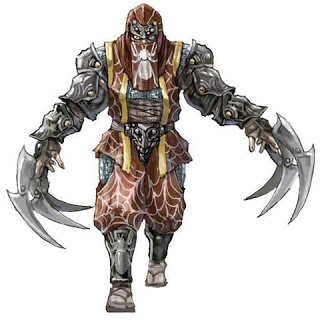
Later-on the player returns to the battle on the staircase, having taken in tips from Ninja Cinema clips and practiced, ready to tackle it anew. Instead of holding block and dodging away from the explosions and strikes, the player now goes for the quick delimb to pacify one of the Black Spider Ninjas, jumps against a wall and dashes from it for a quick horizontal slash with his Dragon Sword to its allies. Their heads fly off, sending their spirits to the other realm and leaving only an orb of Essence floating about. The player quickly presses and holds the block button to prevent Ryu from absorbing the Essence, limiting his attack options, but knowing it will pay off in the future.
He quickly throws another ninja against a wall, crushing their arm to a pulp. When an Incendiary Shuriken sticks to his guard, the player activates an Obliteration Technique on one of the remaining delimbed ninjas crawling towards him, granting some invincibility frames: keeping him alive was the right call. As Ryu jumps away to safety afterwards, an explosion sends him falling to the ground, the Black Spider Clan giving him no respite. As he falls from the sky however, the player knows that the orb is still there, floating above ground. As Ryu lands, he releases the block button, absorbs the Essence orb and activates the Ultimate Technique, killing the remaining ninja. The staircase conquered, onto the next challenge.
And at the core that is what Ninja Gaiden II is, an ebb and flow. Fights that you struggle with or lose aren’t difficult because you were outnumbered or not skilled enough, but because you weren’t in control of the fight. You have to find an opening and get your own offensive going, lest enemies lock you down with their own. Not having that control over a fight, taking it back and winning is what makes you a master ninja. As such, losing control is sometimes inevitable, and it is up to you how to recover from it.
This means that fights don’t revolve around emerging unscathed, but coming out on top by any means necessary. “We had to express that feeling first before we could do the rest,” said Matsui. “The Ninja’s goal was that he wanted to sacrifice his life for the greater good every day, Matsui wanted to explore that further,” noted Itagaki. Fighting in Ninja Gaiden II is to die slower than your enemies. You will get hit, there will be explosions, grabs and shurikens that strike you, but it is you that ends up at the top when all is said and done. And it is an amazing experience because of it, if your mind is open to it.
Because of this change in direction, the health-system received a change as well. Each hit taken deals damage but half of said damage will also turn red. After a fight your health bar refills until the red part which can only be healed through items, save-stations or those much desired blue health orbs. As such it doesn’t punish you too much for taking damage, while still having some form of consequence to it.
(四)
CHAPTER FOUR
triumph
Similarly, success in Ninja Gaiden II can be hard to gauge. While it tries to give the player a feeling of accomplishment via the karma scoring system and ranks, success in Ninja Gaiden II is truly measured in a way that stands apart from most other action titles. It isn’t measured in you beating the game without taking a scratch, by being stylish, doing the longest juggles, the longest chains of attacks, beating it in two hours or getting the highest karma score. Success in Ninja Gaiden II starts by surviving on Path of the Warrior difficulty, praying one doesn’t have to lower it to Path of the Acolyte. Then it ascends to surviving on the higher settings until you start your attempt at the already infamous Path of the Master Ninja difficulty.
The world of the Master Ninja is known only in legend.
Few dare walk this path.
Ahead lie challenges beyond imagination.
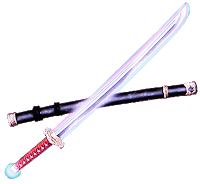
Just like before, Ninja Gaiden II is at its hardest possible on Master Ninja. All foes are upped to their highest forms and some unique enemies make their debut. There will be no mercy. Items and upgrades are more expensive, Incendiary Shurikens are everywhere and bosses don’t hold back. It might be unfair at times, but it needs to be if it wants to consistently deliver that feeling of ebb and flow. While the introduced Obliteration had the goal of having even bad players enjoy the game, this mode offers the opposite; only those dedicated to the game can learn to enjoy its highest difficulty. Once the player has walked the Path of the Master Ninja and put the Archfiend Vazdah to rest, further success … is up to the player.
For instance, you can aim to use fewer healing items, avoid saving after every fight, don’t rely on the magical Ninpo abilities when surrounded, abuse the strongest attacks less and avoid chaining Ultimate Techniques to clear whole clans of ninja. Originally, beating a room using five healing items, activating six Ultimate Techniques and even then barely making it out alive, only to later return to it with more knowledge and experience and beating it while only taking a quarter of your life as damage with but one empty potion bottle lying on the floor: that is progress within Ninja Gaiden II. Progress you make cannot be put into a number, letter or symbol. It is something personal. Ninja Gaiden II cannot be mastered, for the legend of the master ninja is just that: a legend. We can only aspire to do the tale justice.

One reason the game allows this level of play is because there are so many elements changing constantly. With fights having lots of enemies, no battle will ever feel the same as just a single enemy acting differently changes the entire ebb and flow. The bossfights have a similar feeling of flow to them; fights against big and brutal foes like Gigadeath, the Giant Death Worm and Water Dragon that see you use more of your ranged tool-set, while the smaller but infamous Greater Fiends fight you in a duel.
Alexei, the Graceful Ruler of Lightning (電撃のアレクセイ), has a plethora of ranged attacks and grabs paired with an invincible tornado strike that requires very precise timing to avoid without using other shenanigans. Volf, The Invincible Ruler of Storms (嵐のヴォルフ), can cancel his attacks with a rush while also parry your own attacks. Meanwhile The Ruler of Crimson Blood and Queen of the Greater Fiends, Elizébet (血のエリザベート) will randomly dodge your strikes to keep you on your toes. These elements each ensure that the fights stay interesting no matter how many times you’ve played them.
Despite their legacy and titles, the fights don’t last long with some only requiring a few apt punishes to put them to rest. It is strange then that some have animations in which they cannot be attacked and their patterns have to be waited out. Zedonius, Ruler of Flame (炎のゼドニアス), can stay in the air for minutes on end if the player is unlucky. Also, while fluid in their animations and random in their patterns, they feel very safe in their design. One of the biggest changes from Ninja Gaiden Black to Ninja Gaiden II is the emphasis on offensive and the delimb feature combined with the Obliteration Technique, yet these fights play out almost the same as in the previous title.
It would’ve been interesting to see bosses allow for more offensive play or being able to delimb them to activate new and unique phases. While countering plays a bigger part in higher levels of play, they’ll generally be faught in a defensive bait-and-punish style of gameplay that feels more at home in Ninja Gaiden Black. Fact that most still don’t have checkpoints placed after beating them also feels like a missed oppertunity.
Outside of the bosses however, most of Ninja Gaiden II’s problems can be solved by being a better player. A radar would be a nice addition to know where off-screen enemies are, but a keen player knows where they are regardless and how much health they have, so healthbars aren’t needed either. A button to reset from the last savepoint would be a welcome addition, but that’s not the point; you aren’t going to play perfect, so why bother? The Incendiary Shuriken Ninjas could throw less stars but the whole point of the game is to learn to deal with them and use the plethora of moves available to you, like countering their thrown stars, to avoid them.
A clear indicator could be given on whether or not a foe is delimbed and which limb he’s missing, something done in the future by Metal Gear Rising: Revengeance, or you could pay attention to their change in stance and animation. The Fiend’s Bane Bow absorbs Essence slower for its Ultimate Technique compared to other weapons, but you can use this to your benefit. Ryu can sometimes target off screen enemies, but you should’ve known they were there in the first place and have learned what objects and enemies take priority in Ninja Gaiden II’s priority system. The Tests of Valor, miniature challenges within the game, can be seen as boring slogs of having to kill a 100 enemies, or you can see it as endurance training.
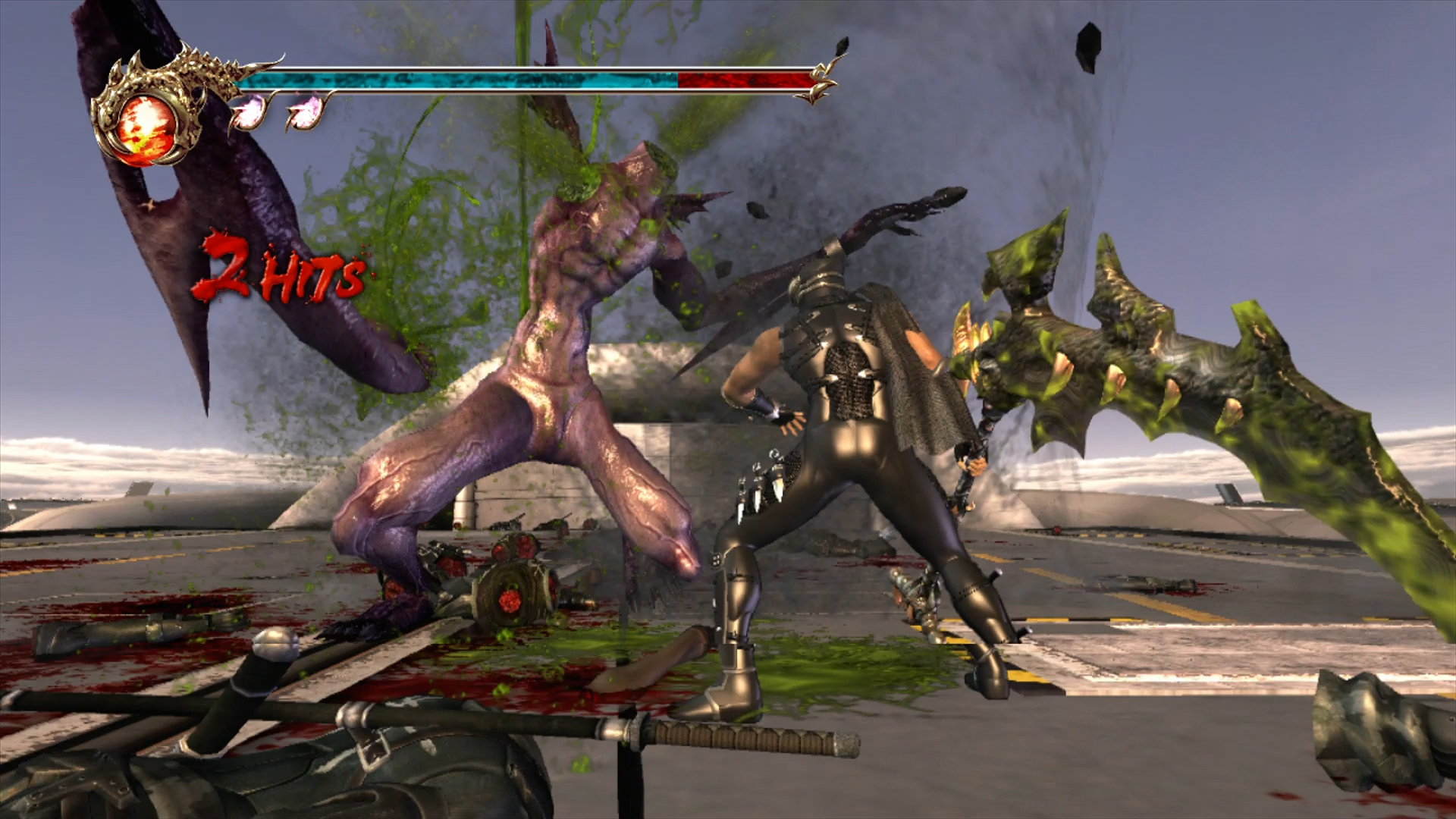
Other problems are a bit more severe though and cannot be excused. Sometimes Obliteration Techniques won’t connect, instead they’ll deal regular damage. Meanwhile in a few fights the entire Obliteration mechanic might glitch and disable by accident, forcing a reload. Using the lock-on during boss-fights lacks any clear indicator if it is turned on or not, and turning it back on can be very unresponsive, making the camera even messier during bosses with additional foes, especially in enclosed areas. Smaller elements, like fighting on water, add little to the game and are more about finding a good move that works instead of playing well, thanks in part to the inability to dodge when on water.
Enemies like the Centaurs and Red Dragons cannot be delimbed – and thus Obliterated. This makes them feel out of place in a game that mitigates large enemy healthpools with this instant-kill mechanic. Smaller enemies like the Ghost Fish aren’t used within combat situations but have been relegated to jump scares from chests and the respawning water-mines serve no purpose but to pad out the game. Fights in general are also very singular in form. There’s not a lot of fights that combine enemy types like Ninjas and Fiends for example, you’re either fighting one or the other, even on Master Ninja. Pair this with the removed adventure aspects and backtracking from Ninja Gaiden Black, and chapters can feel like they drag on, especially the later missions.
Then there’s bosses like Gigadeath and The Giant Worm who can teleport by accident, leaving the level entirely and have movesets that cover all their openings leaving only some cheesy tactics as a possible way to defeat them, lacking that polish the other bosses in the series have offered. The game is short on features as well, with many unlockable costumes from previous entries being absent, not to mention the mission-and survival modes. Lastly, the game clearly lacks optimization with some intense sections like the memorable staircase fight dipping the frame rate from a solid 60 to a the lower 40s on the Xbox 360, making it play out in slowmotion. Dying because the game didn’t function as intended isn’t something that promotes better play, and therefor feels very much out of place in Ninja Gaiden II. Not to mention the frequent crashes. Thankfully these latter aspects were fixed in the game’s re-release on the Xbox One.
(五)
CHAPTER FIVE
the aftermath
These final pointers beg the question: what happened? All of these minor faults stack up and can end up making an excellent game merely ‘somewhat decent’. The exact reason for these blemishes is unknown. Some, like the slowdown during the staircase fight, could be seen as artistic ambition fighting against technical limitations but others are more striking. When Ninja Gaiden II was revealed at Tokyo Game Show 2007, Tomonobu Itagaki introduced it by saying:
“Now please enjoy the world’s best action game.
Running on the world’s best hardware.”
While analysts might beg to differ on Itagaki’s opinion of the Xbox 360’s hardware, he showed no lack of in his faith in the game. While he wouldn’t have come on stage and proclaim that the game wasn’t what he wanted it to be, he had been known for being brutally honest in the past, both to himself and his coworkers. It is possible then that the problems entered the game late in production or that the team simply ran out of time.
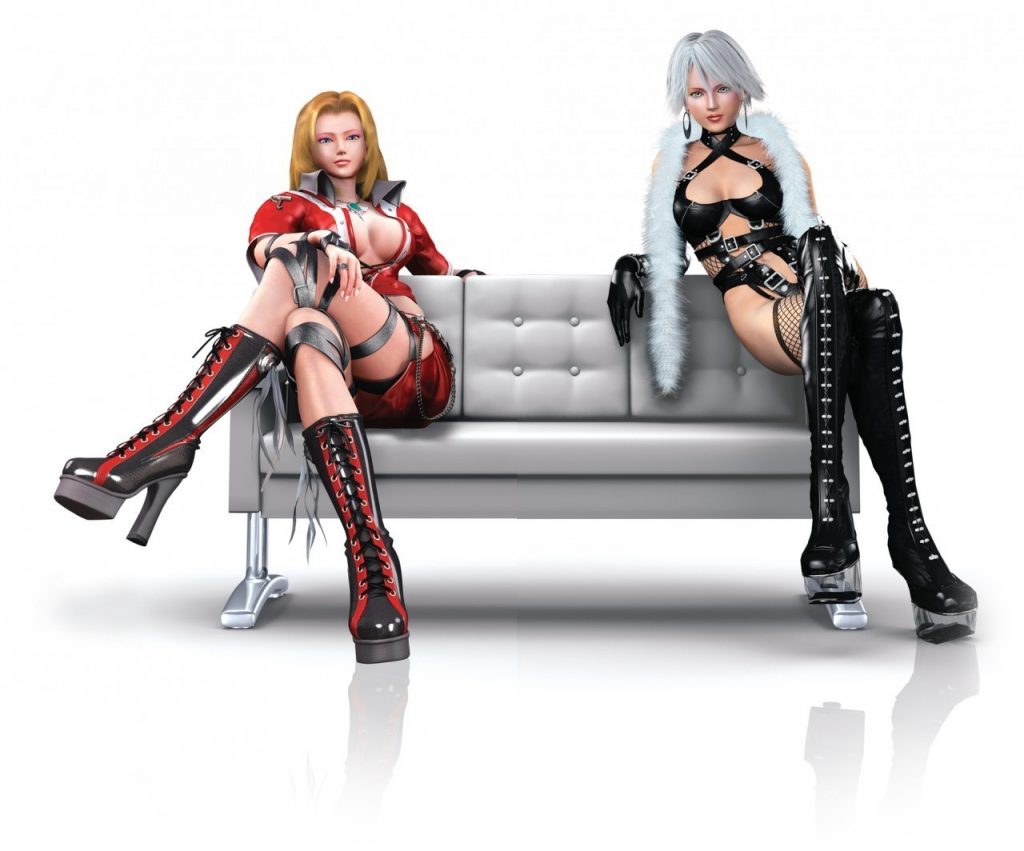
Perhaps it is no surprise then, that Itagaki would not be present at the Tokyo Game Show one year later. Three years prior to Ninja Gaiden II’s completion, Itagaki and his team were promised a bonus upon completion of Dead or Alive 4. Sadly Tecmo had consistently refused payment, and when confronted with this company president Yoshimi Yasuda, the president noted that those that were displeased by this could leave, or sue. The team was more than just a set of designers to Itagaki, and Itagaki was more to them than just a director. In interviews they’ve called him their leader, who stuck up for them. In talks Itagaki has called his team his family, knowing some like Katsunori Ehara from as far back as Dead or Alive 1’s development in 1995, and for family you must fight until the end.
When Yoshimi Yasuda turned defiant against Itagaki, Yasuda made demeaning remarks about Itagaki and his subordinates and colleagues. This ended up causing Itagaki significant emotional distress and worsening his personal relationships with his team – no, his family – and work environment. Mere two days before Ninja Gaiden II was released, Itagaki published the following letter. It read:
“To All Game Fans“
I truly feel sorry to all the fans of the games I have made. Ninja Gaiden II, which will launch on the 3rd of June will be the last Ninja Gaiden I will create. I will also never be able to make Dead or Alive 5. I regret the circumstances that have forced me to leave Tecmo, where I had worked for so many years, and I regret the disappointment this will cause my fans. However, I can no longer continue to work with President Yoshimi Yasuda, a man who chooses not to honor promises even when he is able to do so. I truly hope that nothing like this happens again in the future.“
Itagaki had felt that, over the years, Tecmo was focusing more on making money than good products. When he had heard that Ninja Gaiden Sigma would be ported to the Xbox 360 for a quick cash-in, he personally stopped it as it didn’t have the desired quality in his eyes. 24 days after Itagaki left the company, downloadable content was released for Ninja Gaiden II, including extra missions, a survival mode, a few new costumes and some videos highlighting the location of in-game collectibles. But unlike the Hurricane Packs for the original Ninja Gaiden released in 2004, these weren’t free.
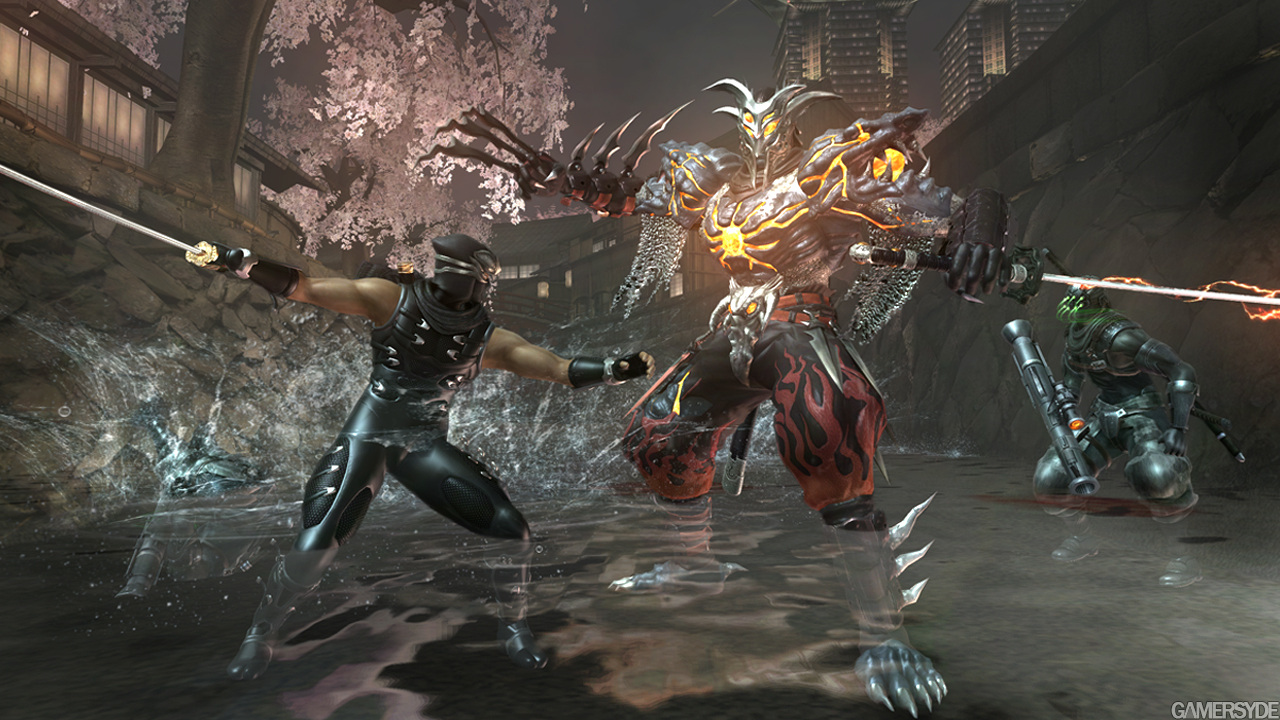
It is with a sad heart that we must note that this was the end for Team Ninja as we had come to know and love it. Their final game held back by internal strife, personal relations and technological limitations. While Team Ninja’s first Ninja Gaiden from 2004 offered a consistent experience, Ninja Gaiden II hits the highest of highs and the lowest of lows. With standout chapters such as The City on the Water, The Flying Fortress Daedalus and Chapter 11’s sombre return to Hayabusa’s hometown … songs like “Vengeance” thundering from your speakers … levels filled with foes like Incendiary Ninja and the Lycans… once the player understands they should not hold block but instead put on the pressure… then no matter when they play it, how old, or what console-generation they’re in: they’re playing Ninja Gaiden II , the best game in the genre. Outside of that though it is wrinkled and unfinished; the polish and care in each movement and piece of code isn’t that of a Master Ninja like before. Sometimes, you just have to fight to get to the good stuff.
So what happened to the people that made this game possible? While Itagaki decided to start for himself with some of his family like Yoshifuru Okamoto at Valhalla Game Studios. Hiroaki Matsui temporarily helped out Itagaki withValhalla’s flagship title Devil’s Third to afterwards work for Atlus. Katsunori Ehara had a similar future, being the Lead Game Designer at Valhalla before eventually settling down at Soleil Ltd. working on titles like Naruto to Boruto. Others, more than thirty of them, left Tecmo and Team Ninja to find work elsewhere in one large exodus.
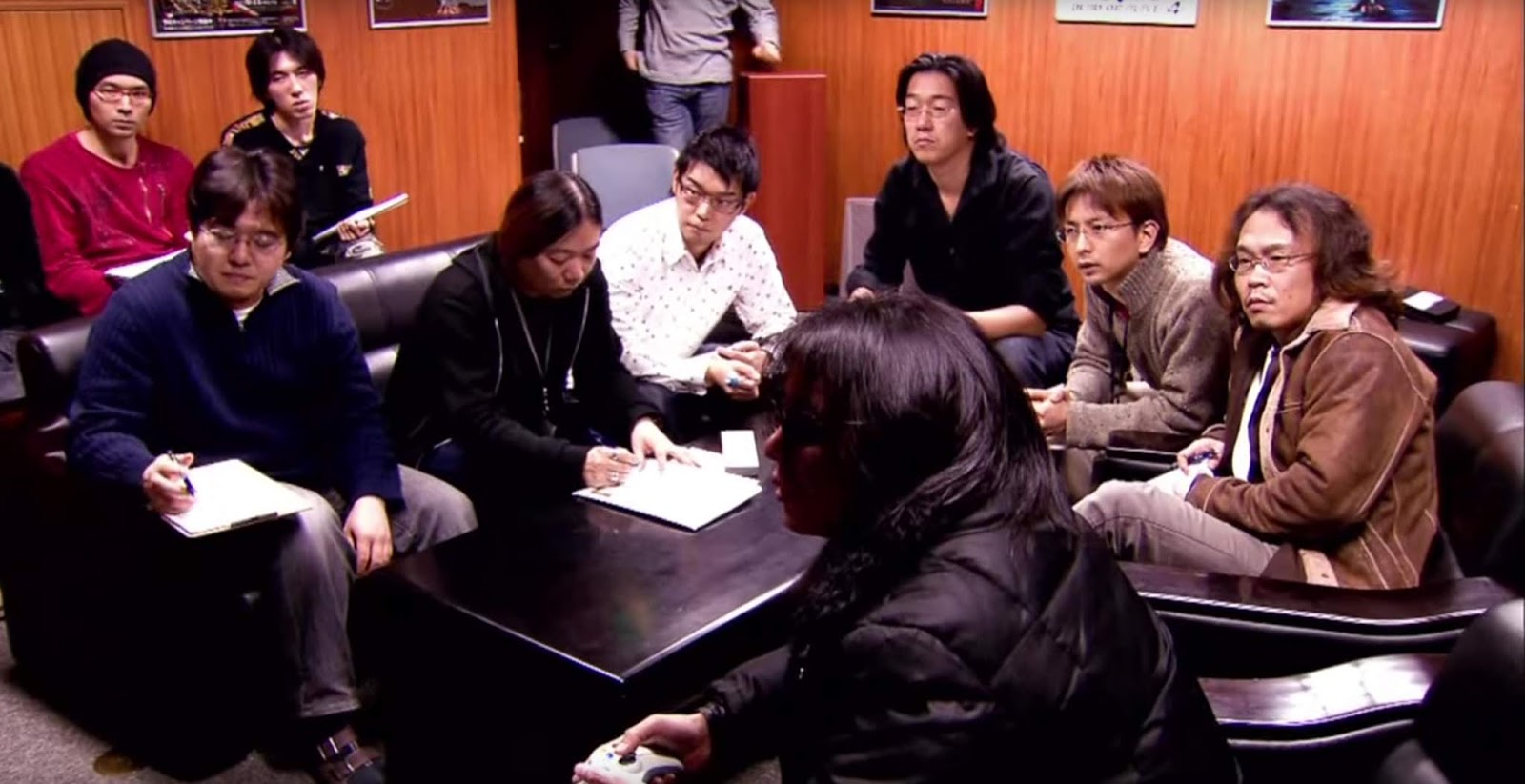
One can only dream that one day not just Itagaki, but his whole family from Team Ninja will revisit the project and finish Ninja Gaiden II for real. As a one they made it, as a one they should finish it as Ninja Gaiden II: Black. Just like the gameplay of the player, the success – or failure – of that pursuit of perfection is often found in the details. Yet, because of the way things transpired, instead of “Black”, the future of Ninja Gaiden II would instead be shaped by a different, and already infamous, moniker.
鑒 reflection style 鑒
In this short section I reflect on the article from my own viewpoints as a gamer and lover of the genre instead of a critic.
Ninja Gaiden II is one of the few games that has the legacy of breaking me, trice. First in the form of its successor Ninja Gaiden Sigma 2 – more on that in the future – and later on both Ninja Gaiden II’s Mentor and later Master Ninja difficulty. I could not, and would not, make the jump from Black in terms of mindset and playstyle. After numerous posts on Reddit, Gamefaqs, NGrealm and even my own forum at Stinger Magazine, I always faltered at Chapter 3. But suddenly it clicked. I don’t know how or why, but the game flowed. I played aggressive, merciless, and my first run through master Ninja saw me abuse every tactic under the sun. Then I played better, played more often. And I got better, faster. Before I knew it I had beaten the game five times in a row on Master Ninja.
To me Ninja Gaiden II stands out because it is unique. There isn’t a Ninja Gaiden II clone on the market, there is only this one game. No one has covered its mechanics, its gameplay, the sheer lust for blood the enemies share as they hunt you down at every step. Smaller but impactful mechanics like the Obliteration Techniques only exist here. That makes it a game I can forever replay, and always hold in my heart. But it is also one that makes me dream about how it could’ve been.
And it is that dream that hurts me greatly. Before writing this article the reasons for Itagaki’s departure from Tecmo was a bit of a mystery for me, the false rumors of his sexual assault muddling my mind (read more about that here). But reading the actual reason I cannot help but give my own personal note on the matter.
Believe it or not, Stinger Magazine does not pay the bills. By day I work as an animator and art-director. Though not the same as what Itagaki worked on, I experienced a similar tale that was a harsh life lesson. I worked at an animation studio that provided explanation animations to clients. My goal was always to make the best possible product for my client, making something that not only they, but also we as a team were proud of. But the president of the studio cared not for those things: “do you really think a client will know if the product he gets is bad”, he noted after saying he wanted to triple production without increasing the staff. Like Itagaki I waited too long, and saw my relations, my friends who I considered family and myself, strain under the pressure and feeling of underappreciation while our passion was bled dry for cash.
This is problem that the creative industry faces in all its sectors, from animation, graphic design, traditional art, games, music – everything. For every designer that wants to make a fantastic product for his audience there is, sadly, a figurehead selling it who thinks not in full smiles, but empty wallets. Reading up on President Yoshimi Yasuda, I can say I don’t know the man. But that I’ve met men like him. And I don’t like them. While much can be said about the dubius choices Itagaki made in the future, or the games he made, nothing can tarnish just what his passion produced in his earlier years.
That aside, I can also not help but respect Ninja Gaiden II for trying to be so different than its predacessor. Team Ninja could’ve easily made another Ninja Gaiden Black, add some prettier imagery, some new enemies and weapons and called it a day. Instead they wanted to do something new, and it shows in both its successes and failtures. And in my opinion: there is merrit in that.
斬 postscript notes 斬
- Despite the game being ten years old at the time of writing, the point of the hidden collectible of the Giant Crystal Skull, obtained at the end if all thirty other skulls are found, still mystifies players to this day;
- I’ve always considered the weapons in Ninja Gaiden II to be akin to a character in Devil May Cry. Where in the latter a character like Dante is the weapon, and the weapons he uses are the tools, in Ninja Gaiden each weapon has the depth of a character, with their own strengths and weaknesses. It really shows once you do single-weapon playthroughs;
- I always typed “incendiary” wrong and had to look it up, this article made sure I’ll forever know it isn’t written as “incindiary”. I still write Obliteration wrong constantly though;
- The first player to beat the game on Master Ninja, atleast according to the leaderobards, was Chinese player Sionken. Known also as Phoenix L lvery on Xbox Live;
- The Vigoorian Flail is based on the Kama-Nunchaku, which is a nunchaku with sickles on each stick. While the weapon exists it is only used for show. The Kama-Nunchaku on its own has a relation to the Kusarigama weapon;
- Tonfa is, unlike most weapons in the game, written in Okinawan. Probably considering that is the place where it gained the most popularity due to the heavy emphasis on the weapon within Okinawan martial arts such as Aji;
- Despite what players might say or how cool it is, the slow-down during the staircase fight is not intentional;
- Though innovative, the delimb and Obliteration Technique system haven’t really been replicated. Dead Space and Metal Gear Rising: Revengeance attempted this, with the later also adding indicators on which body part was removed, but it never had the depth of the system as seen in Ninja Gaiden II;
- The mass exodus of Itagaki and his crew led to a more than 10% nosedive in share value of Tecmo, the highest in the history of the company;
- Itagaki has later stated that about Ninja Gaiden II that “I really wanted more people to enjoy that, but… we ran out of time for balancing. That was a tragedy. Really”;
- Not enough love was given in this article about the music, nor is it given enough praise in the gaming culture at large. Songs like “Crimson Rapsody”, “Blood“, “Lost Civilization“, “Renaissance“, “The Hero“, “Fighting Souls“, the “Main Theme“ and the ever sombre “Vengeance“ are worthy to be named among any list of greatest video-game tunes;
- When working on the Playstation 2 version of Dead or Alive 2 in 2000, the version was buggy and prone to lock up in Versus mode. Itagaki and his team were given two months to make the PlayStation 2 version. After the two months had passed, one of his managers asked to borrow a copy to play, but instead mailed it to a production factory, sending Itagaki into a depression. It is understandable then that the first time Itagaki went to showcase Ninja Gaiden II at Microsoft in America, he went there personally and had the disc on his person. He was very protective of it;
- Nearly everyone at Team Ninja contributed ideas for enemies. Some that are currently in the game were originally cut only to be reinstated after Itagaki was wooed over drinks. Perhaps one of these cocktails is to blame for the Centaurs being in the game;
- Despite the change in vision and additional mechanics, the game was nominated for ‘Least Improved Sequel’ by Gamespot;
- The previous analysis on Ninja Gaiden heavily featured an italian metaphor, mostly related to the renaissance period. If that game was to be compared to that period, Ninja Gaiden II could be seen as the Mannerism era. Within that time-frame artists, not knowing how to follow-up on the perfection laid down by their predecessors such as Donatello and Da Vinci, went wild with experimentation. Elements were taken out of proportion with exaggerated body parts and almost contorted compositions;
- To design the foes Ryu would be fighting in Ninja Gaiden II, Team Ninja used a top down perspective. “You start at the top, and work your way down”. This meant first designing the big bosses Ryu would be fighting at the end of each chapter and designing their way down the food chain. Bosses like the werewolf leader Volf were sketched out first while his minions the Lycans were based on him. This resulted in some stages feeling very unique with enemies that built up to their bigger brethren and finally their master that you had to beat;
- Itagaki and his family constantly tested each individual fight. Itagaki going so far as noting during one very minor engagement that he didn’t like that the enemies were just waiting there, he wanted them to run at the player from afar. The feeling of danger, presentation, how threat of the enemies appear, it is all important when the actual combat is so quick and brutal;
- Like many of the game’s systems, the health-bar can also be turned to your advantage. If you put enough distance between you and the enemies one can trigger the out-of-combat heal to occur, adding a nice tactical layer to larger fights at the risk of exposure in such a big arena;
- This article is the first to take up so much time that I didn’t make the “one article per month” deadline I always aspired to. Granted the 30 year anniversary video had some impact on that as well;
- It is often joked that Sonia is a small reference to Devil May Cry’s Dante, using her twin pistols. Itagaki liked to rile the internet with his statements on the series and its fans and making this Dante a damsel in distress was one of many little jabs he’d supposedly made over the years;
- Thanks to Жетбоксс on Twitter for pointing out that Ehara didn’t work at Namco, but for Soleil Ltd. Cheers mate!
- As noted here, the infamous fight on the staircase was even more difficulty originally. Later patches put a cap on the enemy count, which originaly wasn’t restricted, and resulting in Xbox’s melting;
源 sources 源
- www.imdb.com
- https://www.youtube.com/watch?v=NMTd4Tj79js
- http://www.ign.com/articles/2008/06/04/itagakigate-tecmo-responds
- https://kotaku.com/5028470/heres-the-documented-evidence-itagaki-submitted-against-tecmo
- https://kotaku.com/5604144/guy-who-makes-hard-games-would-like-to-apologize
- https://www.gamesradar.com/dozens-follow-itagaki-in-tecmo-walk-out/
- https://youtu.be/OzdzGcDqJxk
- https://www.youtube.com/watch?v=bQgXK6lYaS8
- https://www.youtube.com/watch?v=H2Xu1VqTR_Y
- https://www.youtube.com/watch?v=gH579ySUvUY
- https://www.youtube.com/watch?v=qYguM6q1Blk
- https://www.ign.com/articles/2007/10/01/itagaki-on-ninja-gaiden-ii
- https://web.archive.org/web/20090226220205/http://www.1up.com/do/newsStory?cId=316805
- http://bbs.a9vg.com/thread-909994-1-1.html

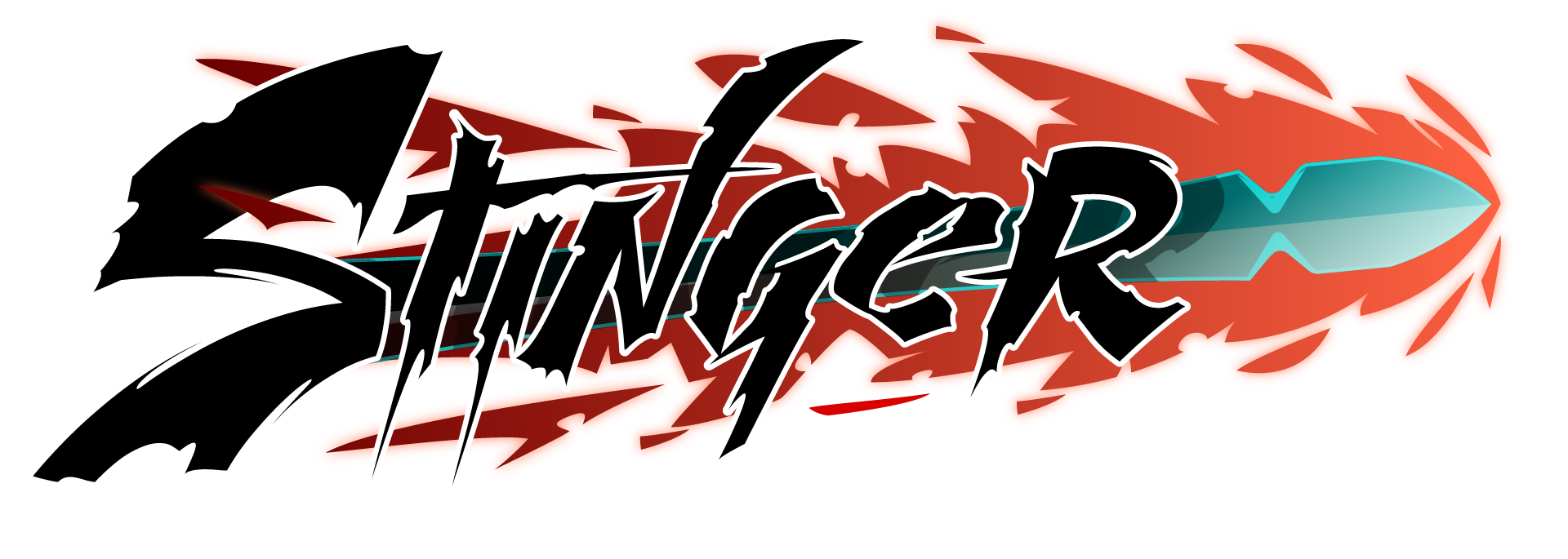
2 Comments